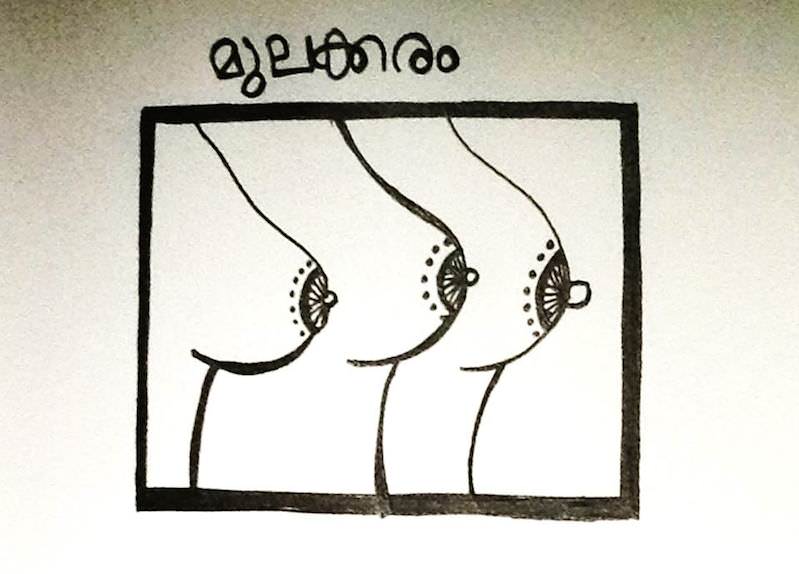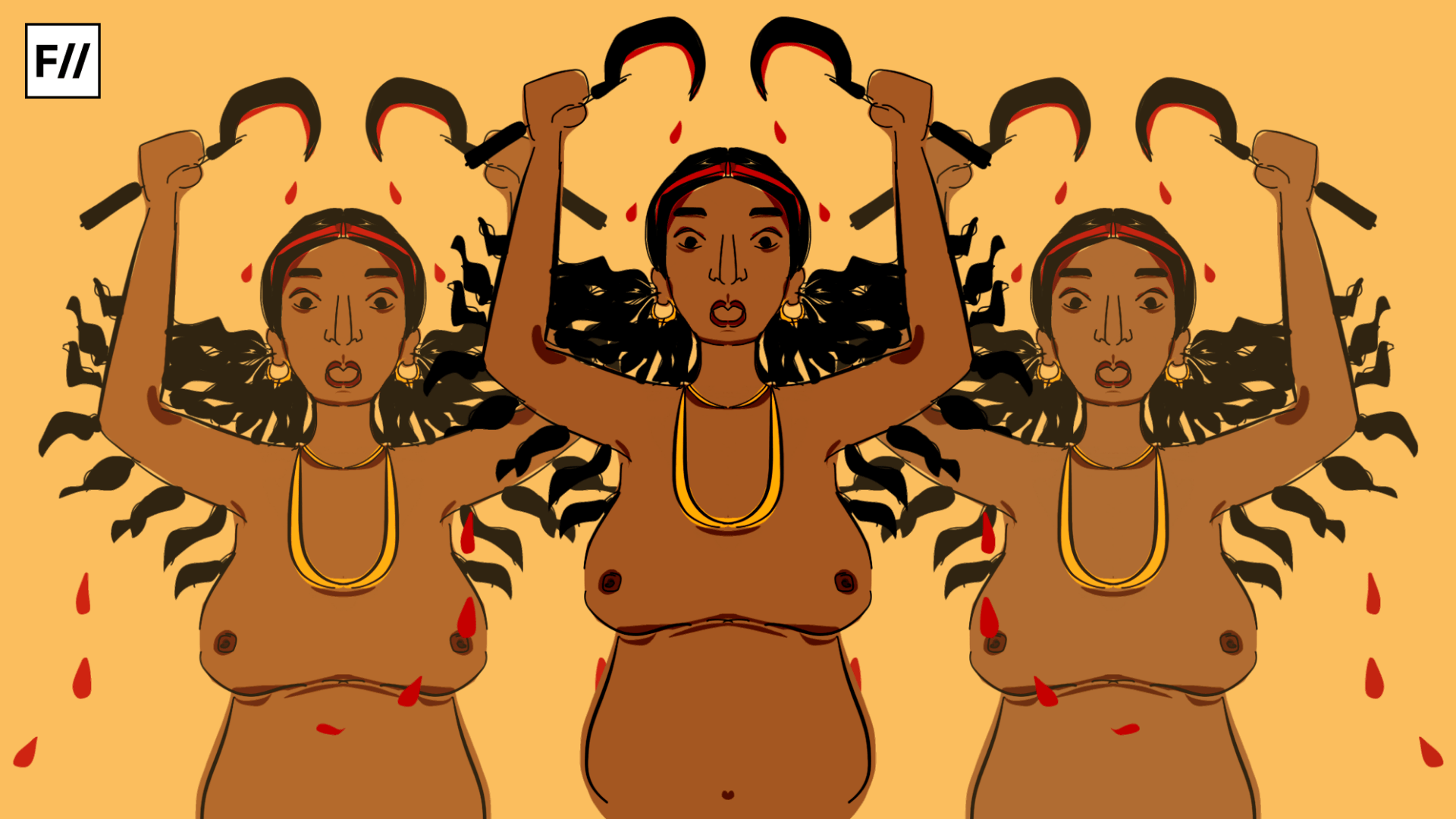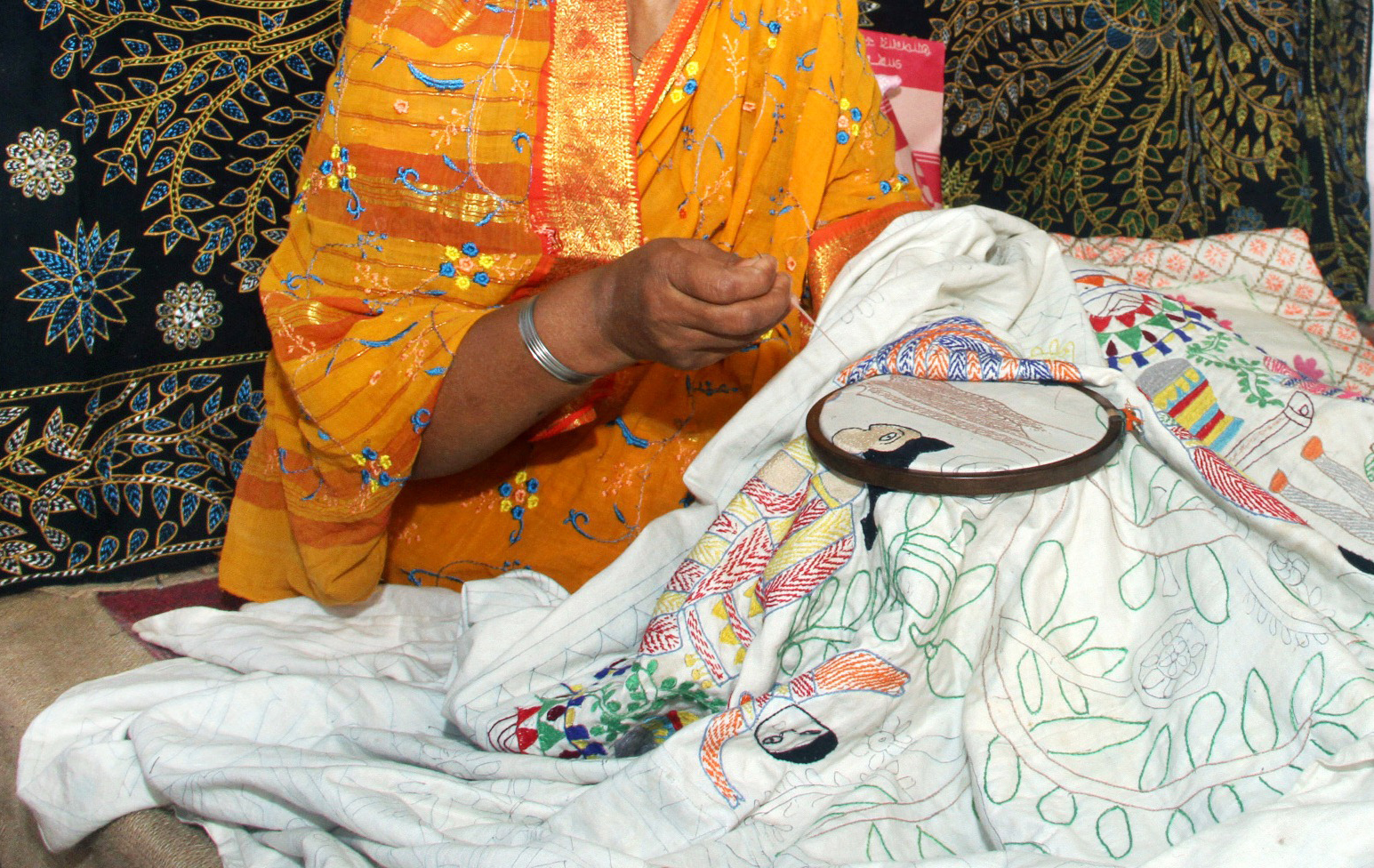Believe it or not, there was a time in the early 19th century when women in Kerala had to pay a Mulakaram or breast tax to be able to cover their chests with a cloth. Fast forward 200 years later and the tussle between making a Muslim woman wear a burqa and trying to force her out of it is still on. It makes you wonder whether it is even about how much or how little a woman wears. Or is it just the context? The context is drawing the lines women can or cannot cross. Looking back into history, it becomes more and more obvious that it isn’t specifically about what women are being forced to do, but that laws and social norms always have a say over it more than women themselves.
Back in the early 1800s, both men and women of the lower caste – mainly the Nadar and Ezhava communities – weren’t allowed to cover their chests in front of members of the upper caste. This was considered a sign of modesty, and they needed to comply. Clothing was considered a sign of wealth and prosperity, and the poor and the lower castes were simply not entitled to it. This was a time when the caste system in Kerala was at its oppressive peak.
In his book, ‘Native Life in Travancore’, Samuel Mateer talks about a list of almost 110 extra taxes that only the members of the lower caste were burdened with. He describes its ‘miserable interference with trade and industry, social freedom and domestic comfort’. It was a system that ensured that the lower castes remained in a cycle of debt and poverty while the upper caste Brahmins and Nairs thrived. But the Nair women were not exempted from the purview of this oppressive system either; they too weren’t allowed to cover their chests in front of Brahmins and while entering temples, to induce modesty.

This period saw the emergence of the Roman Catholic and Syrian Christian community. As the system became increasingly oppressive, conversion into Christianity was seen as a ticket to a better life. Christian women were allowed to cover their breasts with a jacket-like blouse known as the kuppayam. Yet, they were barred from wearing the upper-cloth the way Nair women did, who wrapped the cloth around the torso in a specific style. This was to keep the hierarchy between the two distinct and obvious. The Christian Nadar women were not entirely happy with this proposition and demanded that they be allowed to wear the upper cloth the way Nair women did.
As the influence of Christianity increased, the resentment that the upper caste held for them also grew. This culminated in a series of violent clashes in the Travancore region of Southern Kerala in what came to be known as the Channar Revolt or the Channar Lahala. Churches and houses were burnt down, and women who wore blouses were stripped in public. However, the book titled Religion and Social Conflict in South Asia confirms that, after several years of rebellion on the part of the Nadars and violent repression on part of the caste Hindus, especially the Nairs, it was the direct intervention of the British governor of Madras that brought about the two proclamations from the kings of Travancore, one in 1859, by Maharaja Utram Thirunal and the other in 1865 by Maharaja Ayilyam Thirunal, abolishing the restrictions concerning ‘uppercloths.
The Channar Mutiny (or revolt), sometimes also referred to as the Maaru Marakkal Samaram is said to have been one of the very first struggles for female liberation in Kerala. Historian Joy Balan Vlaathangara explains the impact of this rebellion in his book ‘Vaikuntaswamiyum Samoohika Navothanavum’.
Cries for equality began to rise not just from various parts of Kerala, but from the whole of South India after the Channar Mutiny. The agitation to end ‘oozhiyam vela’ or work without pay, the agitation to secure entry into temples, the agitation to secure the right to walk on public roads, all these struggles that went on to change the face of Kerala were inspired by the success of the Upper Cloth Mutiny.
Of all the forms of rebellion that formed part of the Maaru Marakkal Samaram, the story of a woman named Nangeli stands out; a story that has become symbolic of the struggle. Nangeli belonged to the central region of Kerala, in a place called Cherthala. The breast tax or the Mula Karam, which was one among the many oppressive taxes levied on the lower caste, meant that a woman was granted the right to cover her breasts only if she paid a fee to the government. In the year 1803, Nangeli was brave enough to unflinchingly defy the orders of the state. When news spread of her defiance, the parvathiyar or the tax collector arrived at her house to collect money. It is said that, instead of placing the money in a plantain leaf, she cut off her breasts with a sickle knife and presented them to him. Her body succumbed to the excessive bleeding, and she died the same day.
Also in protest of the breast tax, her husband Chirukandan jumped into her funeral pyre out of grief, committing suicide. “Nangeli’s story is unique also for the fact that it is the first recorded instance of a man committing sati,” says Ajay S. Sekher to The Hindu, a teacher of English at the Tirur centre of Sree Sankaracharya University of Sanskrit. Following the death of Nangeli, the breast tax system was annulled in Travancore. The place she lived came to be known later as Mulachiparambu (meaning land of the breasted woman). Nangeli’s sacrifice came to be known throughout the state and is talked about to this day. Yet, the fact that this iconic hero has no mention in Kerala’s official history records is heartbreaking.
In light of the Channar Revolt, this Malayalam article published on the website Azhimukham writes about the #ReadyToWait campaign by women in Kerala that opposes allowing their entry into the Sabarimala temple. The term azhinjadikal, which roughly translates into ‘loose women’ in English, is frequently used to describe women who are opposed to the said campaign. In the article, the writer reminds us that the term was also used in the past to describe the Nadar women of Travancore who led the Channar revolt. They were never ‘blessed’ or approved of by society, but it was these ‘loose women’ who secured the right for women in Kerala to dress the way they wanted to. This is exactly why the role and the battles of these so-called ‘loose women’ can never be downplayed.
It is also why it matters to keep fighting at every point. There will always be people who say ‘it isn’t as bad as it used to be’ and that modern feminists are fighting for causes that don’t matter. But this isn’t true. The scale of the impact of these battles will only be put into perspective with time, when the bigger picture begins to form. Any fight that takes us even an inch closer to a society with gender equity is important. In a world that has oppressed women from the beginning of time, why should we stop at anything less than equality?
Featured Image: Ritika Banerjee for Feminism in India
About the author(s)
Sheryl is a science graduate who now wants to become a lawyer. Her interests include feminism in pop culture, cats and Netflix.





If Equality is what every feminist strive for, then I must say, fighting to remove the “reservation for women” and other things that show women in a weaker light are the ones to be abolished first… This would help in portraying women in a more equal and capable light as that of men and help in the cause of fight for equality everywhere…
“This period saw the emergence of the Syrian Christian community” this statement is wrong. Roman Catholic(Latin) and English churches were involved in conversion in 19th century..It was a century after “Channar Lahala” Syrian Christian community started conversion.
Hi Sunny Mathew, according to ‘Native Life in Travancore’ (one of the most cited books on the topic), both the Roman Catholic Christians and the Syrian Christians were part this era.
Roman Catholic Christians in Kerala now include Latin, Syro Malabar and Syro Malankara Churches. Syrian Christians include Syro Malabar & Syro Malankara Churches in the Catholic Church, Orthodox, Jacobite, Marthoma etc…In addition to these, Anglican Churches were active during the 19th century. Only Anglican and Latin Church were involved in conversion. In the 20th century, Syrian Catholic Church also started conversion but the newly converted group could not merge with the mainstream. Now they are known as Dalit Christians.
Syrian Christian community was established in the 1st century AD in the Jewish settlements in Kerala.
Latin Christian community was started in the early 16th century by the Portuguese.(they were Catholics – Latin Catholics)
British colonialists were not interested in conversions but London Mission Society , started in 1795 got involved in conversions. Those who took part in the ” channaar lehala ” were the channars converted by the Anglican missionaries.
I was only saying that Syrian Christian Community did not emerge in 19th century. They are the disciples of St. Thomas who came to Malabar coast after the defeat of the kingdom of Gundoforus in 50 AD by the Sakas.
“Those who took part in the ” channaar lehala ” were the channars converted by the Anglican missionaries” and Latin Catholics.
Ms. Sebastian, thanks for a good article. It also makes me sad how ignorant we are about even our neighboring states; I am from Madras.
My one complaint would be that this is a a very skeletal looking article very much lacking in context especially for someone not familiar with the social history of Kerala. I am hoping that you will come out with a series of articles expanding on the points raised.
Thank u so much..I got a new information of the life of Kerala women..I always wanted to know about their struggle..
The sad and mean mentality of the caste-hindus could be imagined from this hard reality of the past and brazenly some caste hindus call it a glorius culture of hindus!
It reflects the Inability of king at Kerala
https://www.facebook.com/ThinkingHumanity/videos/1855896834723139/
Dress codes have been used from ancient times to control women and thereby interfere with human rights. We see that women now want freedom from dress codes altogether and that includes freedom to go nude in public and equality with men in going topless.
Semitic religions and their religious texts have also taken away equality, liberty and human rights of women by imposing severe restrictions in their activities, movement, dress and behaviour. Christian missionaries in some places like Kerala exploited the social inequalities for their advantage for religious conversion but did stand by primitive practices like slavery in many African countries and America. Black women, of course, could not have escaped the sufferings of slave trade in those countries, Arab women were also traded in market
What happened years back has no association with what is happening at sabarimala now.The other thing is ,Hindus know to protect their belief.Others need not help us unless we ask for it.
First one should learn the mythology and see the strike against entry of women in that light.
Blanket protest means you are not believing in legend and that directly means you are a non believer.Non believers should not try to destroy temples.
‘Hindus know how to protect their belief’ was the Hindu creed when Hindu widows were burnt at the Sati funeral pyre of their husband, when ‘low caste’ Hindus were denied temple entry. Good thing is that now not only non-hindus, but also many among Hindus themselves have revolted against several such revolting practices of Hindus, and emerging from demon-cratic to democratic levels. The sabarimala issue will take
some more time to be resolved, but eventually Hindu women will emerge successful in this unjust practice too.
Very informative…
I am very proud of being Indian but I hate travangore gvrnmnt …..am really disappoint abut that !!!